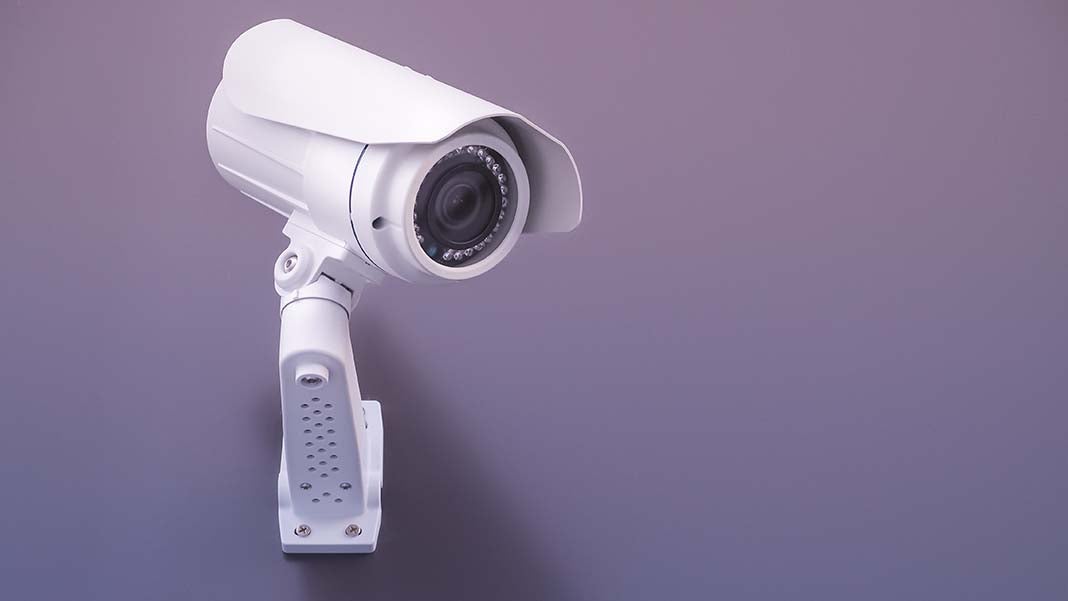
Closed Circuit Television—CCTV—systems are one of the best ways to monitor your business or home remotely. Understanding how they work can help you use them to their fullest advantages.
There’s a good chance you’re familiar with the concept of CCTV systems. A security camera mounted on the wall or ceiling of a business captures images of whatever’s going on in that spot, with footage that’s viewed and recorded remotely.
But to truly make the most of this powerful piece of security technology, you’ll need to know how it all works. While there’s some variation between different models and manufacturers, most systems generally work on the same concepts.
What are CCTV Systems?
CCTV systems consist of a series of video cameras set up throughout a building. Most CCTV systems are used for surveillance of a business and its employee and visitor comings and goings, as well as security. The cameras are set up to transmit video and sometimes audio to a television monitor, set of monitors, a recorder or some combination of monitor and recorder.
Advances in technology have made it possible for cameras to transmit images and audio for access on smartphones, tablets and other mobile devices, as well as desktop computers. Recordings aren’t limited to video tape or disk any longer, either. Newer surveillance and security systems can record to USB drives, DVR systems, disk drives, SD memory cards or even cloud storage, which means the recordings are stored in a server housed off-site.
How do CCTV Systems Work?
Closed circuit security systems work by transmitting the video and/or audio signals directly to the monitor and storage devices. Where a normal camera would broadcast to the public—think regular television—the CCTV signals are private and are sent wired or wirelessly to exactly where they’re supposed to go. Simply put, CCTV broadcasts are private and direct, whereas regular television casts a wide range with its signal and is readily accessible by anyone within range of the broadcast.
What are the Features of CCTV Cameras?
There are several features that help define closed circuit cameras, each of which plays a part in determining what cameras are right for your business or home. Depending on your needs and what you’re using your cameras for—whether you’re looking to have a general idea of the comings and goings of your employees on a daily basis, for example, or are watching closely to monitor for theft—you’ll want to choose different features.
Types of Images
Some cameras record color images, some record black and white. Regardless of color or monochrome images, some cameras also have the ability to record audio along with the video images.
Some cameras are equipped to take night images. The Matrix IR 2.0 by LTS Technologies, for example, utilizes infrared technology to eliminate dark corners and shadowy images even during the darkest part of the night.
Frames Per Second (FPS)
Another defining characteristic that distinguishes camera models from one another is frames per second, or FPS. This is the number of full images—or frames—the camera records and transmits to the storage device in one second. 30 FPS is considered real-time, and while many CCTV cameras have that capability, very few record at that high rate—the amount of space it would take for a system to process and store a video of that magnitude usually isn’t worth it.
Most CCTV cameras capture somewhere in the rate of one to six frames per second—this is usually sufficient for security and surveillance purposes. Some camera models feature variable programming that allows you to change the number of FPS recorded.
Pan Tilt Zoom (PTZ)
Cameras that are stationary and capture images in one direction or spot are referred to as fixed lenses. Others feature motorized lenses that pan across a room at varying intervals. Some cameras allow the user to control them via a wireless radio frequency (RF) or analog controller—non-fixed cameras are judged based on whether they allow the user to move the camera on a horizontal axis—left to right, or the pan of the camera; on a horizontal axis—up and down or the tilt of the camera; and to a varying depth—wide angle or small angle focus, or the zoom.
Is There a Difference Between Wired and Wireless Systems?
While most modern CCTV systems are equipped with security features and failsafes, there are some differences between wireless and wired CCTV systems. Not all of the differences have to do with the security of the images being recorded and transmitted. Depending on your unique needs, you may opt for a wireless security and surveillance system or a wired system.
Wired CCTV Systems
Wired systems make use of a coaxial cable—the same type you would use on your home television set. The cameras are wired directly to the monitor. As you can imagine, this can get bulky, cumbersome and unwieldy for large buildings. A fixed or wired connection is generally considered more secure, as there’s very little chance the images and audio could be intercepted.
This may be a consideration in businesses where privacy is paramount — in a healthcare or legal setting, for example. The longer the distance between the camera and recorder, the poorer the image and audio will be. This can be remedied by choosing a more heavy-duty cable (such as an RG59 or CAT 5 designated cables.)
Wireless CCTV Systems
Wireless systems transmit the audio and video signal from the cameras to the recorder at a specific radio frequency broadcast range—typically 2.4 GHz, the same as many WiFi devices, cell phone towers and even some appliances. Quality and reliability depend on a clear line of sight and proximity to the recorder—the more walls and obstacles in the way of the signal, the tougher it is for the broadcast to go through.
This doesn’t mean your cameras must be in the same room as your recorder—most cameras on the 2.4 GHz frequency can transmit through walls just fine, but the broadcast may require tinkering to be the best.
What are the Storage Options for CCTV Systems?
Storage options available for your CCTV system depend largely on the type of camera you invest in. Using LTS’s Matrix IR 2.0 as an example, those cameras rely on the purchase of an additional HD-TVI DVR. It allows for the transmission and recording of higher quality images similar to what you’d see on a television broadcast. Storage options for these cameras includes cloud storage—which is sent and stored in an off-site hardware server, or NVR mass storage options (like a USB drive, SD card or disc.)
Analog CCTV systems use tape or DVD to record images and basically it all boils down to resolution: if you need crisp, clear videos accessible anywhere, an HD-TVI DVR with cloud storage is the way to go. If you don’t need a high quality image, an analog system with any type of storage is usually more cost-efficient.
How Can I Learn More?
Learning about closed circuit security systems can seem like learning a new language. The field is full of technological concepts and jargon, making it seem discouraging to someone who just wants to keep their business or building safe and secure. While having a basic understanding of how CCTV systems work can help you stay better informed of your options, a simple overview isn’t enough to cover all the possible variables, features and ins-and-outs of CCTV systems.
Ask your professional installation technician or security company for more information. If you still don’t understand something, there’s absolutely no shame in asking for a different explanation or a reference you can consult to learn more.
3950 Views












